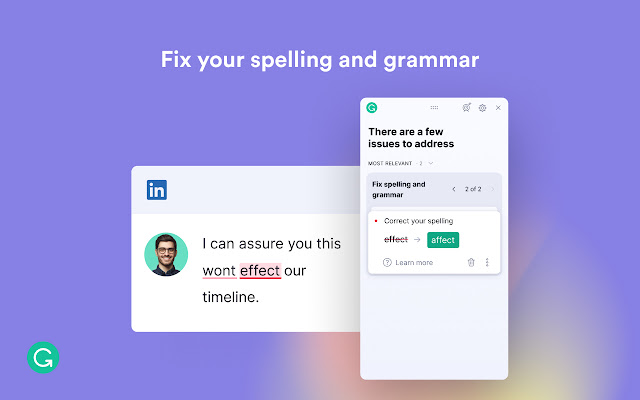AI Writing Assistants: 3 types of tech for faster, easier writing

The sophistication of AI writing assistants (or typing assistants) is rapidly increasing. We compare the different classes of writing assistant tooling available - text prediction, text generation, and text editing - explain their differences, and how they help you write better text, more quickly.
A brief history of writing assistants
Some of the earliest assistant software appeared when Microsoft Office gave us ‘Clippit' (better known as Clippy) – a somewhat over-eager animated paperclip designed to help us with our tasks.
Clippy’s remit was wider than a pure writing assistant; indeed Clippy would offer his services in any one of Office’s applications, asking things like “It looks like you’re writing a letter. Would you like help?”. However, Clippy was not widely liked.
Upon Microsoft’s announcement that Clippy would be discontinued in 2001, The Guardian wrote that he was ‘one of the most unpopular features of Microsoft software and his demise will be welcomed the world over’. Poor Clippy.
Even though Clippy himself is no more, his legacy lives on in the latest generation of AI writing assistants.

Text Prediction, Autocompletion and Autosuggestion
When communicating via SMS on early mobile phones became popular in the late 1990s, predictive text assisted people to write more easily on the frustratingly small keypads. It didn’t always get things right (which led to the era of amusing ‘autosuggest fails’) but predictive text software continued to improve.
As the internet grew, text prediction in the form of autocompletion or autosuggestion in web browsers, email clients and search engines became standard, all of which can be considered to be types of writing assistance.

Now, we have a new generation of much more sophisticated AI writing assistants that are a growing trend.
Predictive Text AI vs Text Generator AI vs Editing AI
Looking at the market for writing assistants now, we find three broad types of tooling; text predictors, text generators and text editors. Some AI writing assistants combine two of these functions.
What’s the difference between writing assistants that predict text in real-time, writing assistants that generate text in one go, and editing AI?
All three classes of tools have the ultimate aim of helping you to write text, either more quickly, more accurately or both, but the three classes have different use cases.
.png)
Predictive Text AI (autocomplete assistants)
Text prediction tools work in real time as you a type. I am using one right now as I type this document. It continually gives me suggestions of next letters, next words and sometimes several words, which I can accept by pressing 'tab'. This makes typing faster than typing without the writing assistant - because I’m saving a lot of keystrokes.
Such predictive text AI learns your typing behaviour and therefore gets more and more useful, the longer you use it. Indeed as the sophistication text prediction AI increases, the future looks quite interesting – as one of our AI engineers discusses in this post: Will Robots Replace Writers? The Future of Predictive Text AI.
Some text prediction tools (for example Typewise) also have spellcheck and grammar checkers built.
Examples of Text Prediction AI tools include: Typewise’s Text Prediction, Gmail’s Smart Compose, and Microsoft Outlook’s Text Suggestions.
.gif)
Text Generator AI (Autowrite assistants)
Text Generators work differently. Rather than using them for free-form text, there are designed to generate text for entire emails, blog posts or adverts, in one go. By entering information about what you want to write, for example the type of writing (sales email, advert, blog post), keywords, writing tone, and style for example, they are able to compile a piece of writing in a few seconds.
This provides marketeers a quick and easy way of producing short copy, escape writer’s block and save time.
Examples of Text Generator AI include: Rytr, Peppertype.ai and Jasper.

Text Editor AI (Editorial Assistants)
AI editors (also called grammar checkers, spell checkers or style editors) excel at correcting typos and grammatical errors, ensuring that writing is error free. Some go even further, suggesting stylistic or structural improvements.
Typically, AI Text Editors don't predict text, so their benefit is largely to improve the quality of composition of rather than to increase the speed or productivity of the writer.
Examples of Text Editing AI include: Grammarly, LanguageTool and Linguix.

What is the best AI Writing Assistant?
Because each class of assistant has a different use case, the best will depend upon your requirements. For day-to-day editorial assistance to ensure your writing is free of mistakes, tools like Grammarly and LanguageTool are a great choice.
If you wish to quickly generate entire blog posts or emails with minimal effort, then you should consider AI text generators.
And if you are wanting to improve your writing productivity, in particular within customer support and sales teams, then text prediction AI like Typewise will enable you to do that.
Read more about how our AI Writing Assisant tool can boost productivity here.


